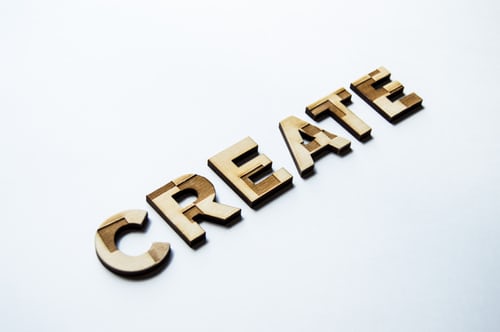
Creativity should mean Success
‘Creativity’ is a buzzword of our times. In both education and the world of business, the value of nurturing student and employee creativity is ever more recognised. But what is creativity and why is it seen as such a positive trait? Can creativity be learned or are some people simply born more creative than others? How can developing our own creativity help us find a happy and successful path into our futures?
Humans are, by nature, a creative species. To invent new things, put forward new theories and solve difficult problems, a high degree of creativity is required. Without creativity, where would we be? Yet, for at least the last century, our education system has pushed students to accumulate knowledge, rather than develop independent thought and originality.
Results or Creativity?
In our modern, results-obsessed era of education, pressure on schools and students to perform and attain has side-lined the skills that most employers say are desirable in new recruits. The ability to play around with ideas in order to generate new ones isn’t prized by current school curriculums because it isn’t easy for schools to measure. This in spite of the fact that these are the very skills that will serve students best when they enter the world of work.
Our social, digital and technological landscape is continuously evolving. In fact, it’s never been more important to equip students with the capacity to learn, think and innovate. Memorising a truckload of facts is largely redundant. Employers now seek creative thinkers above those who are good at following rules. As the psychologist, Jean Piaget said: “The principle goal of education should be to create people who are capable of doing new things, not simply of repeating what other generations have done-men who are creative, inventive, and discoverers.”
(It’s a great quote, but Piaget lived in a different era. Let’s apply this to both men AND women in the 21st century).
But we’re not all creative, are we?
It’s a common misconception that some people are born more creative than others. We’re all born creative. A study by George Land in 1968 suggested that non-creative behaviour is learned. A group of children were tested at the ages of five, ten and fifteen. The five year olds scored an average of 98% for creativity. At ten that figure reduced to 30%. At the age of fifteen, it nose-dived to a measly 12%. Adults given the same test scored an average of just 2%. The implication is that, as we grow up and move through a school and societal system of rules and regulations, our ability to be imaginative, try things out and learn from imperfections, slowly ebbs away.
It doesn’t take a genius to work out that to be creative, we need to think. As many celebrated great minds would testify, having the mental space to ponder and play around with thoughts underpins all creative ideas and solutions. The best work doesn’t come from dutifully gluing your nose to the grindstone. Innovation comes from daydreaming and trying things out, making mistakes and persevering. Sadly, children in traditional school environments are rarely given time to be truly creative. Teachers are under enormous pressure to ‘deliver’ the curriculum. This narrowing of children’s education is often given as the top reason many parents choose to home-school.
So how can we nurture creativity?
As our brains are infinitely complex and largely underused, it makes sense to engage in varied activities that tap into different parts. Some of the most famous innovators of our times are also accomplished in other areas. Albert Einstein was a violinist. Bill Gates is a mean bridge player. JK Rowling likes to draw. Allowing ourselves time to play helps combat the need for perfectionism, quells the fear of failure and silences the nagging voice of self-criticism, which all block creativity. So when we put our minds to being creative in one area, we can enhance our performance in another.
Well, what are creative outlets?
This list could go on forever, but a few ways to tap into our creative minds are through sport, painting, knitting, singing, writing, reading, dancing, planning, debating, photography, playing an instrument, learning a language, embarking on a distance learning course, sketching, designing and gardening. Engaging in activities like these will fire up our neurons and help us make connections between the left and right sides of our brains. Our thinking will be more agile and our ideas more creative.
Besides those benefits, exercising our whole brains gives us a sense of confidence in our capabilities. By diversifying how we use our precious energy, we get a feeling of being connected to ourselves and the world around us.
And the world needs more of that.
